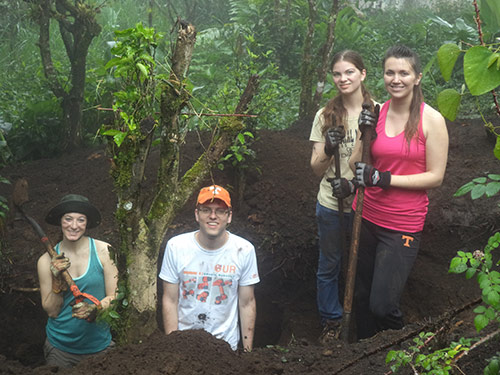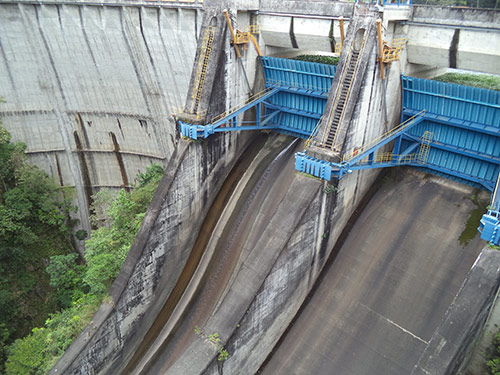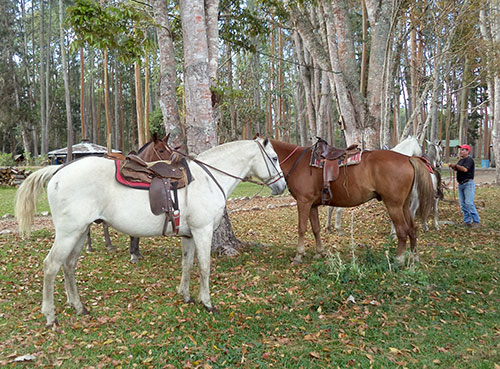Emily Beckman: Student Report from 2015 Alternative Spring Break in Costa Rica
The engineering service trip to Costa Rica has certainly been one of the best vacations I have ever been on. Most of the time, traveling involves visiting a lot of tourist destinations and a quick look at what has been deemed the most important places. This trip however allowed us to experience the culture of Costa Rica by allowing us to work alongside the family we were helping and even eating meals in the houses and prepared by the families involved in the project.

Our service project was the installation of a septic tank system for the family of Gustavo Mata. The old septic tank system in their house had been very simple and pumped the waste water out into a pipe in the yard, which led to an undersized septic tank. One big problem with this system was that it backed up easily because the flow was very slow.
The system we installed more closely resembled the system used in many American homes. We first finished digging out a hole downhill from the house that the volunteers from the previous week had started. After spreading a thin layer of small rocks in the uphill section of the hole, we carefully rolled a large, and extremely heavy, concrete tube into the hole. This process was difficult first because of the weight and second because it had to be oriented with the openings facing in the correct direction.
We then filled the lower section of the hole with many large volcanic rocks. Although these rocks appear to be porous, they are actually a lot heavier than they look and must have a very high density. Trenches for the pipes running from the house to the hole also had to be dug. Once those were finished, we began to glue the PVC pipes together in the correct places. This process was a bit difficult because the PVC cement dries very fast. Once it is applied to the pipe, you must fit the ends together quickly and then orient the pipe in the correct direction before it sets.
By the end of the week we had nearly finished the entire system and the main work left to do was to add a few more volcanic rocks to the lower section of the hole and to cover the holes and trenches up with dirt.

In addition to working on the septic tank system, we were also able to visit various places in the area. Federico, our guide, took us on a tour on the first Sunday we were there. We were able to see the hydroelectric dam used to produce almost all of the electricity in the area, several beautiful outlooks of the valleys, a mural of Costa Rican history in an old police station, two of the most famous churches there, and the ruins of another old church.
On Wednesday we had a break from work and visited a local hot springs and coffee plantation. On Thursday after working, we went to a nearby national park and were able to ride horses around the lake created by the hydroelectric dam. The horses were followed by an adorable baby water buffalo who seemed to think one of the horses was his mother and just wanted to play.
